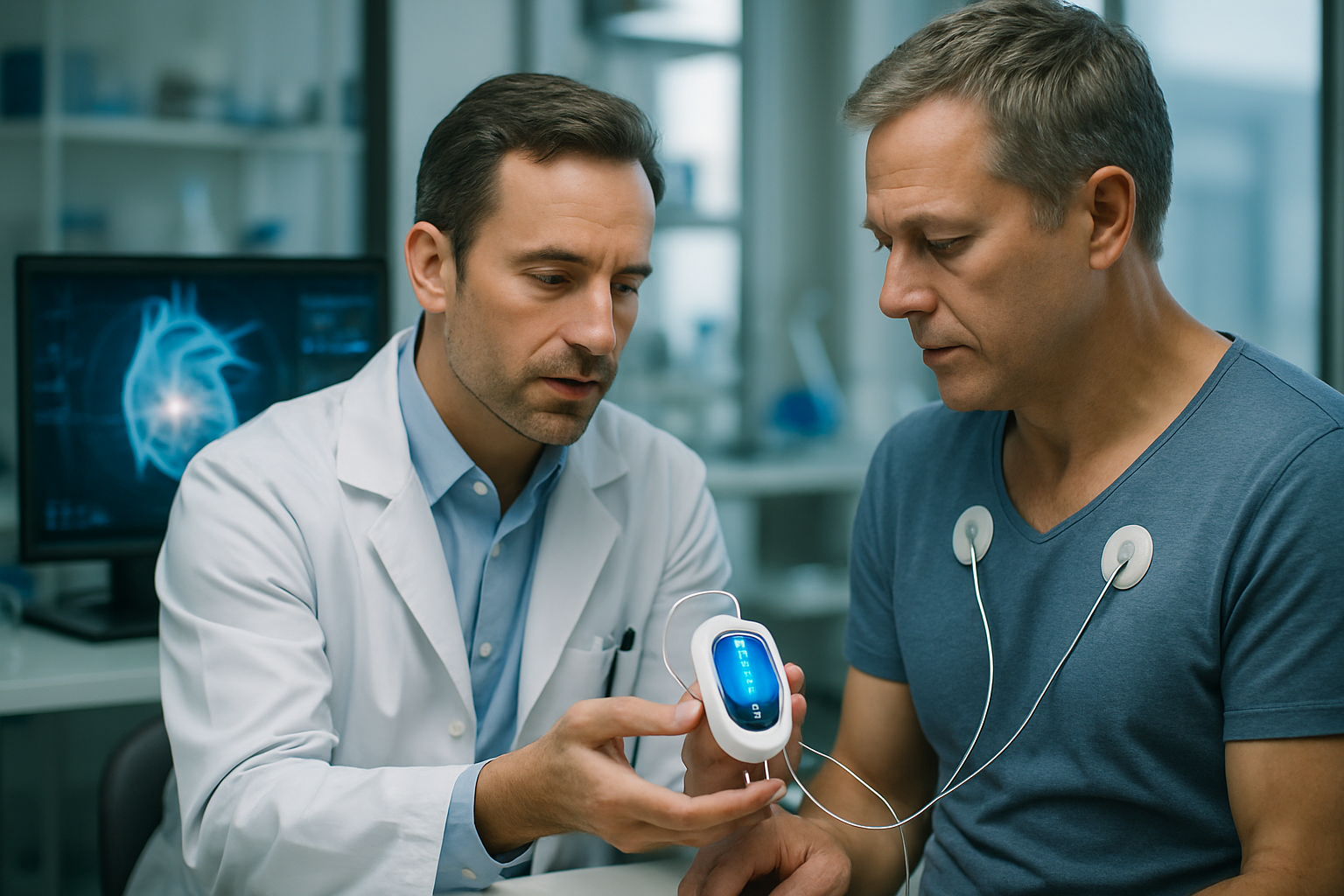Revolutionizing Telehealth: The Rise of Haptic Feedback in Remote Medical Care
Imagine a world where doctors can perform physical examinations from thousands of miles away, feeling every pulse and detecting every anomaly as if they were in the same room as their patients. This isn't science fiction—it's the cutting-edge reality of haptic feedback technology in telehealth. As remote medical care continues to evolve, haptic systems are poised to transform the way healthcare professionals interact with patients across vast distances.

Understanding Haptic Feedback Systems
At its core, haptic feedback in telehealth relies on a complex interplay of sensors, actuators, and high-speed data transmission. Wearable devices equipped with advanced tactile sensors capture a patient’s physical responses, which are then translated into digital signals. These signals are transmitted in real-time to the healthcare provider’s haptic interface, which recreates the sensations through carefully calibrated vibrations and pressure points.
The technology behind these systems has seen remarkable advancements in recent years. Microsensors capable of detecting minute changes in pressure and temperature have become smaller and more sensitive, while haptic gloves and bodysuits have become increasingly sophisticated in their ability to replicate a wide range of tactile sensations.
Applications in Remote Diagnostics
One of the most promising applications of haptic feedback in telehealth is in the realm of remote diagnostics. Traditional telehealth consultations have been limited to visual and auditory information, leaving a significant gap in a doctor’s ability to perform thorough physical examinations. Haptic technology bridges this gap by allowing physicians to virtually “touch” their patients.
For instance, a cardiologist equipped with a haptic interface can now feel the strength and rhythm of a patient’s heartbeat from across the globe. This level of sensory feedback enables more accurate diagnoses of heart conditions and can potentially save lives by identifying urgent cases that require immediate in-person care.
Enhancing Remote Surgical Training and Procedures
The impact of haptic feedback extends beyond diagnostics into the realm of surgical training and even remote surgery. Medical students can now practice complex procedures on virtual patients, feeling the resistance of tissues and the precision required for delicate operations. This immersive training environment accelerates the learning curve and allows for safer, more effective skill development.
In the field of telesurgery, haptic feedback systems provide surgeons with crucial tactile information during robot-assisted procedures. This enhanced sensory input allows for more precise movements and better judgment of the force applied during surgeries, potentially reducing complications and improving outcomes for patients in remote or underserved areas.
Challenges and Future Developments
While the potential of haptic feedback in telehealth is immense, several challenges must be addressed for widespread adoption. Latency in data transmission remains a significant hurdle, as even milliseconds of delay can disrupt the seamless experience required for accurate sensory feedback. Additionally, the cost of high-fidelity haptic devices and the need for standardization across different telehealth platforms pose obstacles to implementation.
However, ongoing research and development in telecommunications infrastructure, particularly in low-latency networks and edge computing, are paving the way for more responsive haptic systems. Innovations in materials science are also contributing to the creation of more affordable and durable haptic interfaces, making the technology more accessible to healthcare providers worldwide.
The Human Touch in Digital Healthcare
As haptic feedback technology continues to evolve, it promises to bring a more human element to digital healthcare interactions. The ability to convey touch and receive tactile information remotely not only enhances the diagnostic and treatment capabilities of healthcare professionals but also helps to foster a stronger connection between patients and providers in virtual settings.
This technology has the potential to revolutionize healthcare delivery, particularly in rural or remote areas where access to specialized medical care is limited. By enabling more comprehensive remote examinations and procedures, haptic feedback systems could significantly reduce the need for patient travel and expand access to high-quality healthcare services.
Ethical Considerations and Patient Privacy
The integration of haptic feedback in telehealth also raises important ethical considerations, particularly regarding patient privacy and data security. The intimate nature of touch-based interactions, even when conducted remotely, necessitates robust protocols to protect patient information and ensure consent. Healthcare providers and technology developers must work together to establish clear guidelines for the use of haptic data and to implement stringent security measures to safeguard this sensitive information.
Conclusion: A Tactile Future for Telehealth
The incorporation of haptic feedback into telehealth represents a significant leap forward in remote medical care. By bringing the sense of touch to digital healthcare interactions, this technology has the potential to enhance diagnostic accuracy, improve surgical outcomes, and create more meaningful connections between patients and providers across vast distances.
As we look to the future, the continued development and refinement of haptic feedback systems will likely play a crucial role in shaping the landscape of telehealth. With ongoing advancements in telecommunications and sensory technology, we can anticipate even more sophisticated and nuanced haptic interactions, further blurring the line between in-person and remote medical care.
The journey towards fully integrated haptic telehealth systems is still in its early stages, but the potential benefits for patients, healthcare providers, and the broader medical community are immense. As this technology continues to evolve, it promises to usher in a new era of more accessible, comprehensive, and personalized healthcare delivery—one where the healing power of touch knows no boundaries.





